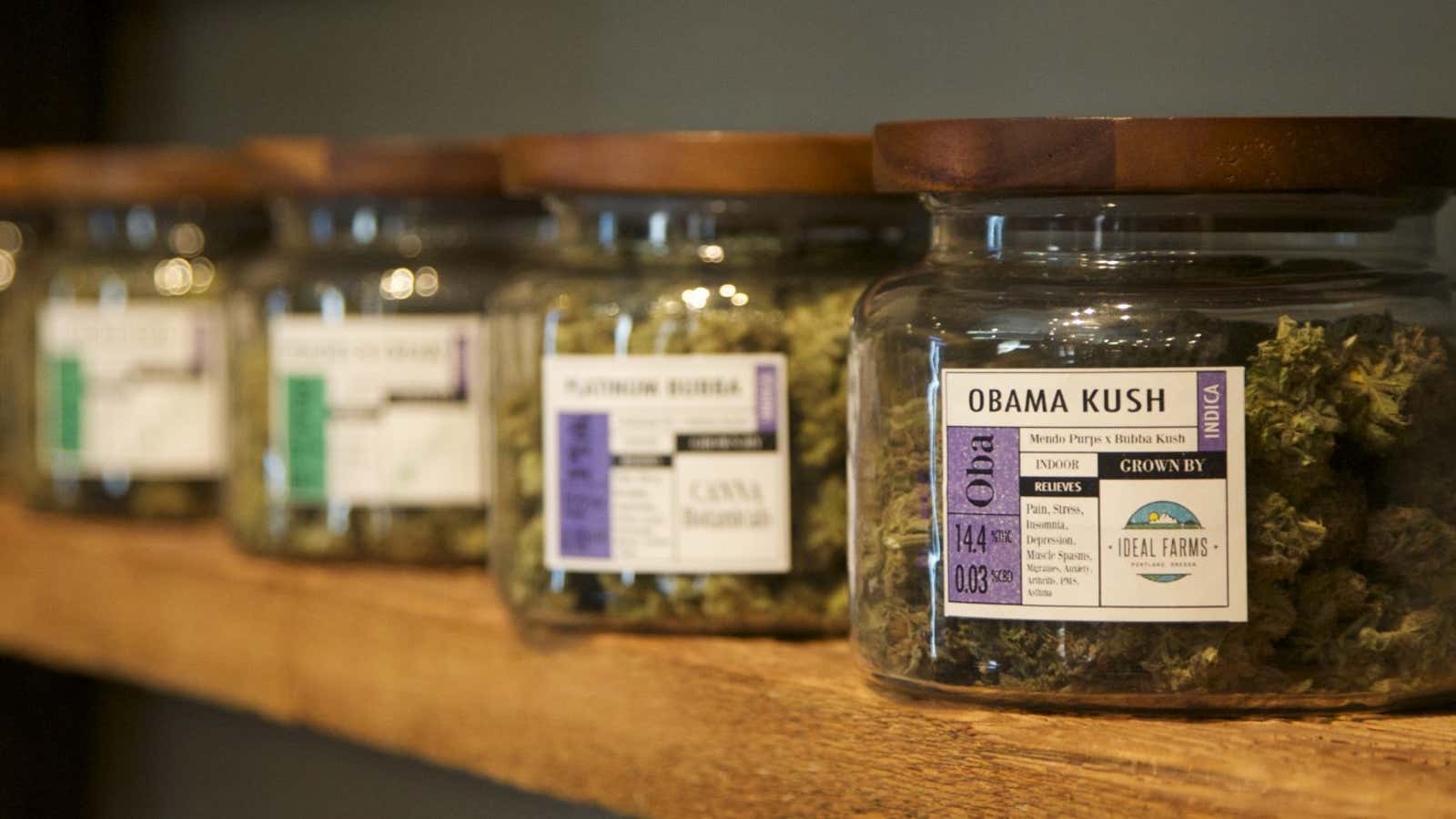For years, Whole Foods has been trying to shake its reputation as the place paychecks go to die. As far back as 2011, CEO John Mackey said it would be a “lot easier” for the grocery chain to push its healthy-lifestyle messaging “if the media would stop repeating Whole Paycheck, Whole Paycheck.”
Despite its image as a kale-scented money pit, Whole Foods isn’t the most lucrative retail outfit. Apple stores, jewelry stores, Costco stores and now marijuana dispensaries actually tally more annual revenue per square foot.
Medical and recreational marijuana dispensaries have average annual revenue per square foot of $974, according to the 2016 Marijuana Business Factbook, released in March. That compares with $4,799 for an Apple store, $3,132 for a luxury jewelry store, and $930 for a Whole Foods.
Of course, it’s far easier to squeeze 25 varieties of pot into a tiny storefront than 25 varieties of organic tomatoes (though edibles account for 30% of marijuana retailers’ sales, on average). Pot shops can also run into a slew of problems unfamiliar to traditional retailers, including expensive operational licenses, limited access to banks, and the ever-present threat of police raids. But as the legal and logistical details of selling weed continue to shake out, it does seem dispensaries will prove themselves viable retail players.
And no wonder: According to the Factbook, medical and recreational marijuana sales in the US could hit $11 billion by 2020.
